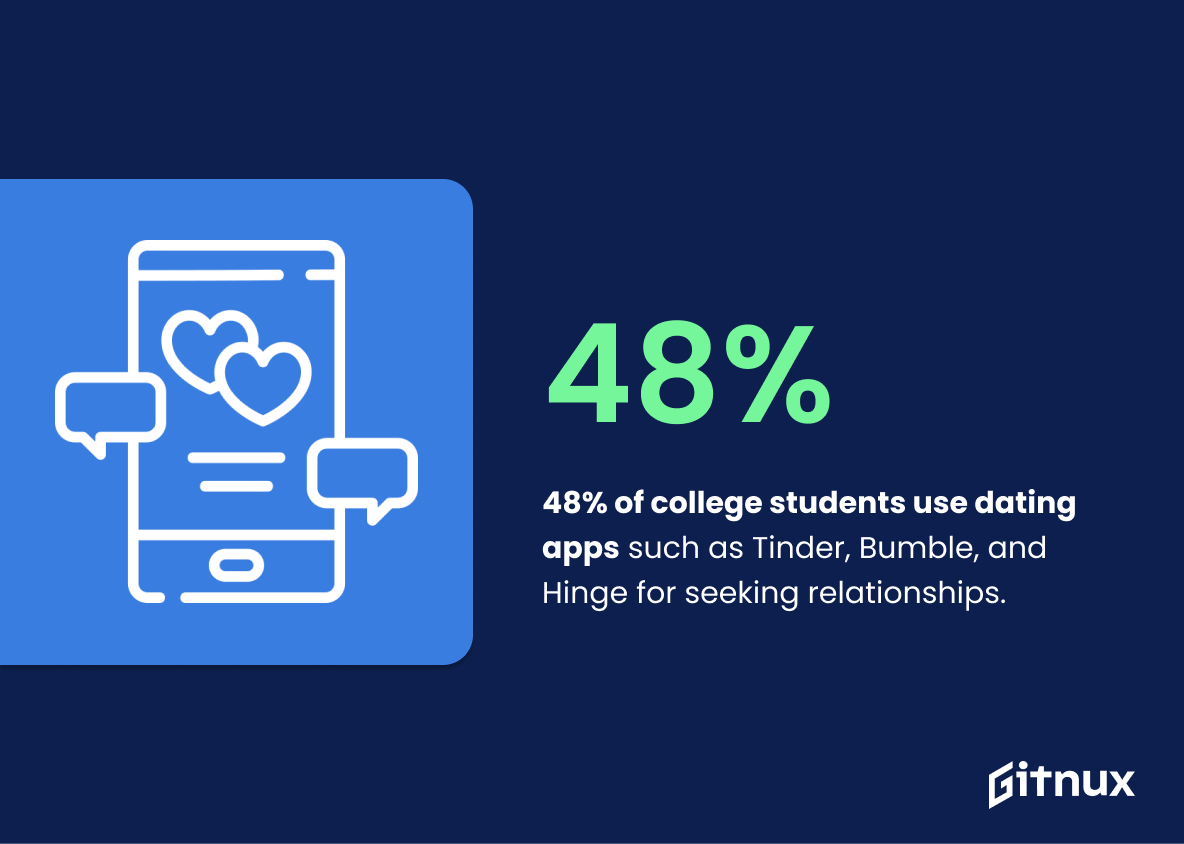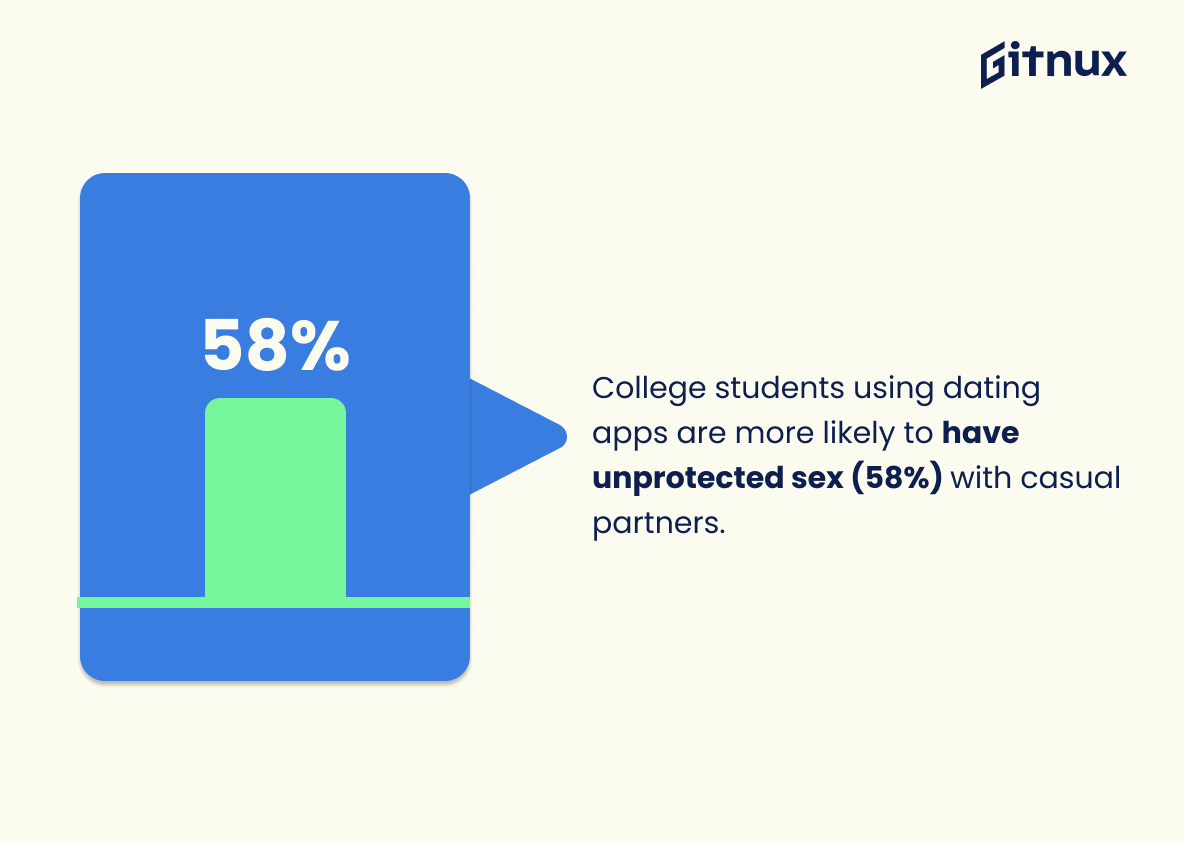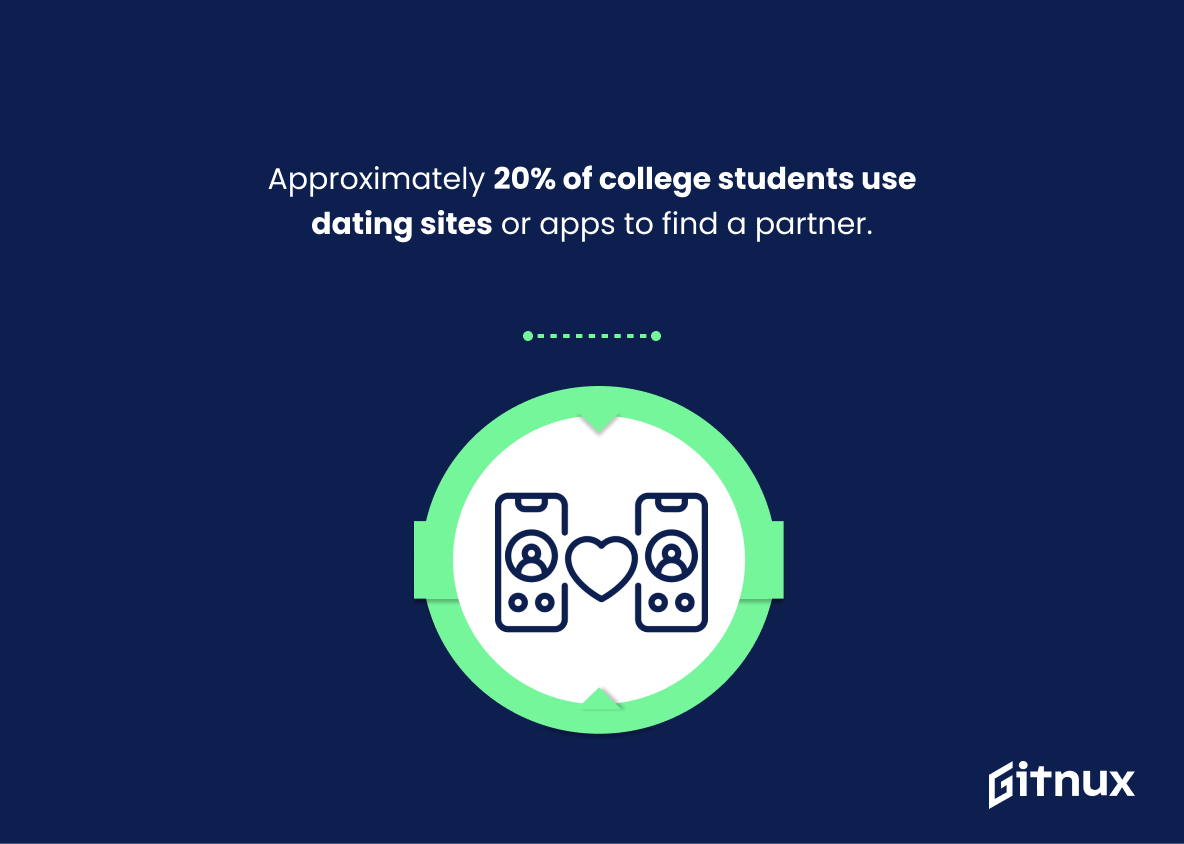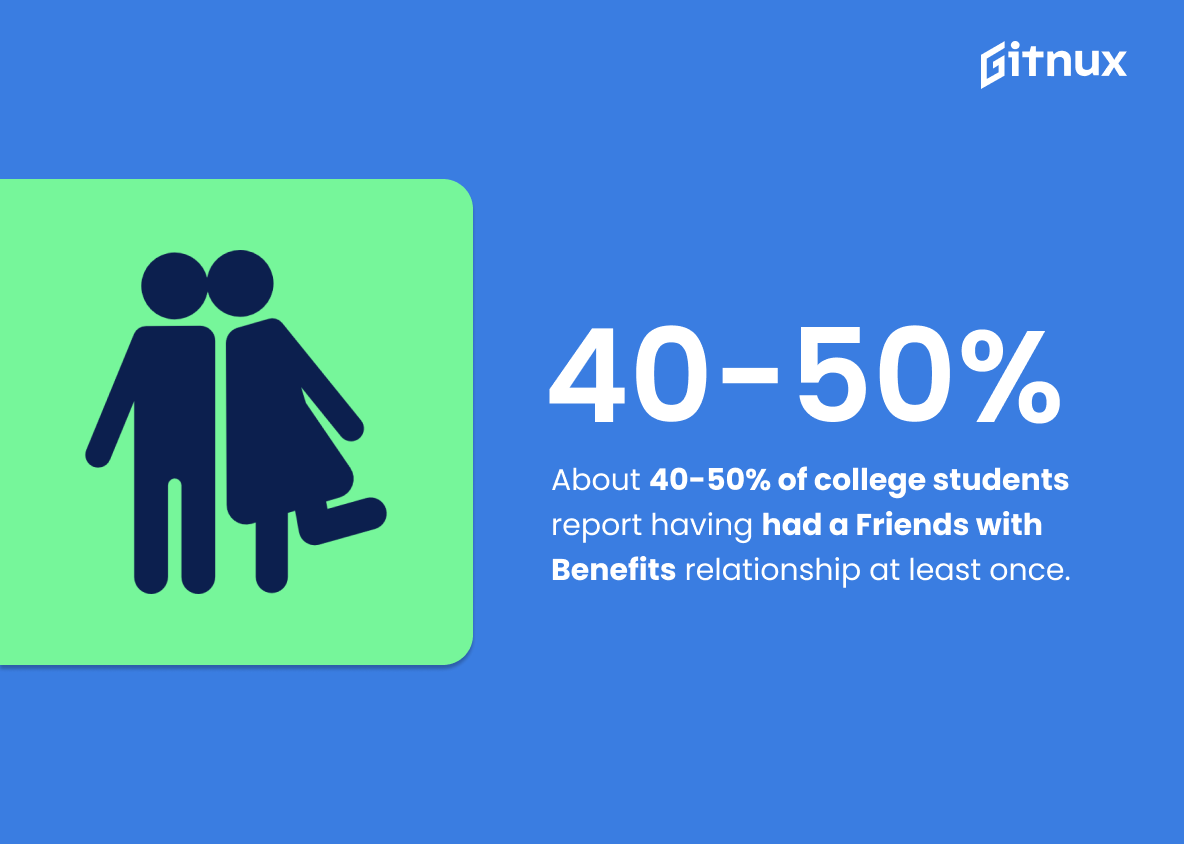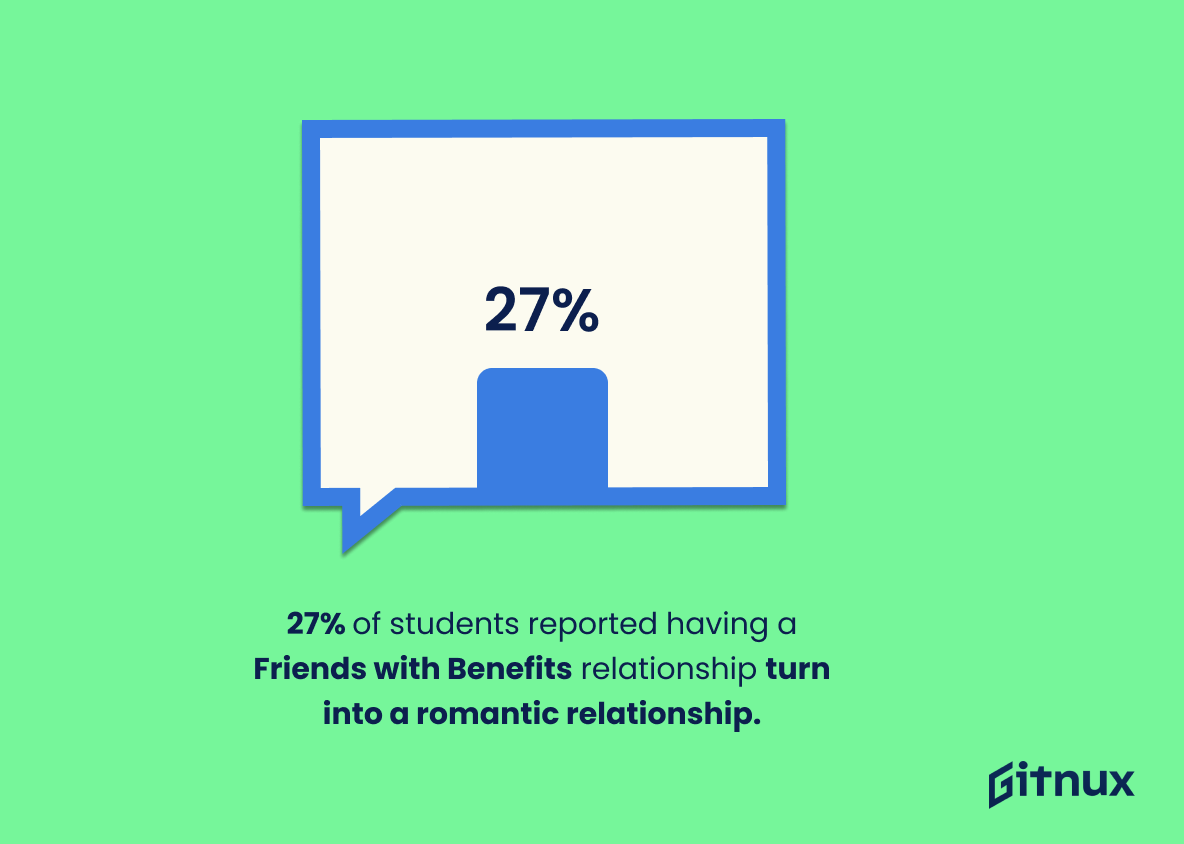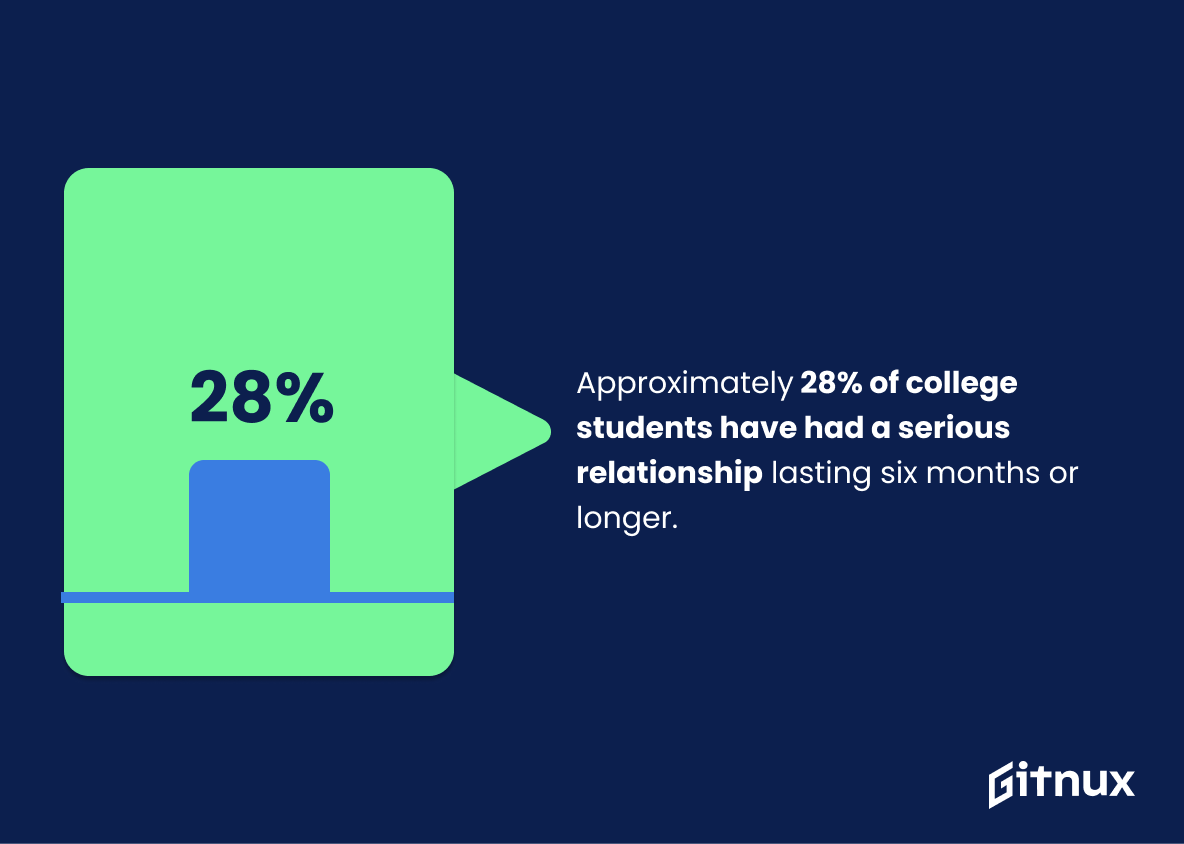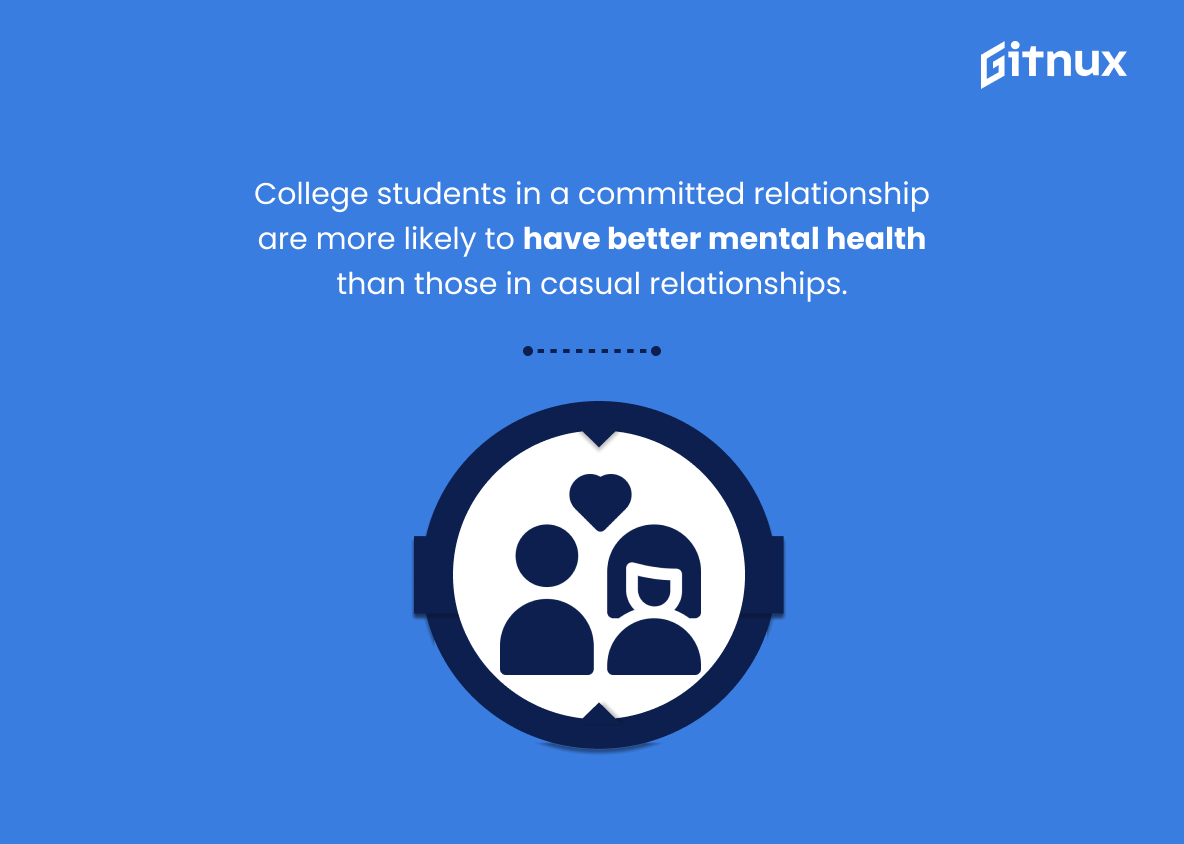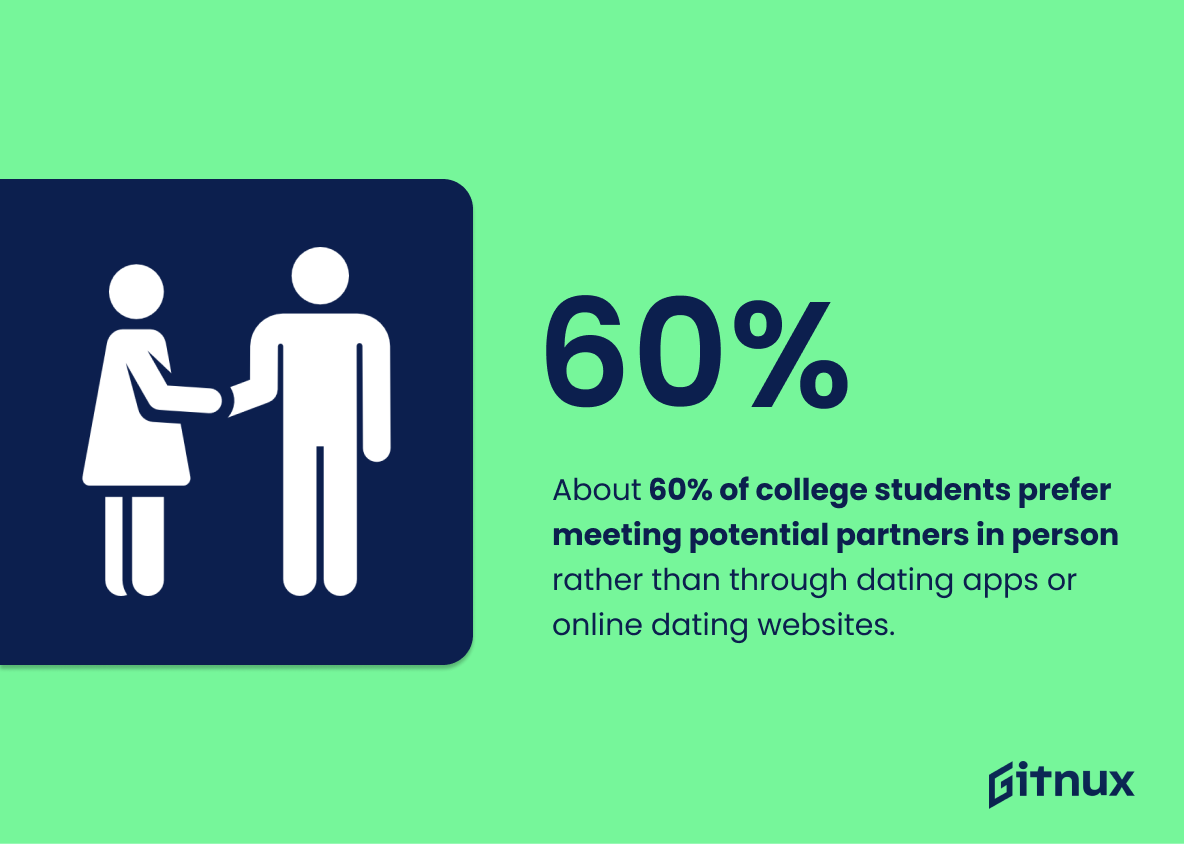College dating is a complex and ever-evolving landscape. With the rise of technology, college students now have more options than ever when it comes to finding potential partners. From traditional relationships to casual hookups, there are many different ways that college students can explore their romantic interests. To better understand this dynamic environment, we’ve compiled 20 statistics about college dating from various sources. These stats provide insight into how people date in today’s world and what trends they’re following when it comes to seeking out relationships or just having fun with friends. Read on for an overview of these fascinating facts.
College Dating Statistics Overview
48% of college students use dating apps such as Tinder, Bumble, and Hinge for seeking relationships.
This statistic is a telling indication of the changing landscape of college dating. It shows that more and more students are turning to technology to find relationships, rather than relying on traditional methods. This statistic is important to consider when discussing college dating, as it provides insight into the current trends and preferences of college students.
63% of college women and 45% of college men would prefer a traditional relationship over a casual one.
This statistic is significant in the context of college dating statistics because it reveals the different preferences between men and women when it comes to relationships. It shows that the majority of college women prefer a traditional relationship, while college men are more likely to opt for a casual one. This information can be used to better understand the dating dynamics between college men and women, and how they approach relationships.
50% of college relationships have experienced long-distance dating at some point.
This statistic is a telling indication of the reality of college relationships. It highlights the fact that many college couples are willing to go the extra mile to make their relationship work, even if it means having to be apart for a period of time. This statistic is important to consider when discussing college dating, as it shows that long-distance relationships are a common occurrence and should be taken into account when discussing the challenges and successes of college relationships.
College students using dating apps are more likely to have unprotected sex (58%) with casual partners.
This statistic is a stark reminder of the potential risks associated with college dating. It highlights the importance of taking precautions when engaging in casual relationships, as the consequences of unprotected sex can be severe. It also serves as a warning to college students to be mindful of their decisions and to practice safe sex.
Approximately 20% of college students use dating sites or apps to find a partner.
This statistic is significant in the context of college dating statistics as it provides insight into the current dating landscape of college students. It indicates that a large portion of college students are turning to online dating platforms to find potential partners, which could be indicative of a shift in the way college students are meeting and connecting with each other. This statistic could be used to further explore the implications of this shift and how it is impacting college dating culture.
About 40-50% of college students report having had a Friends with Benefits relationship at least once.
This statistic is significant in the context of college dating statistics as it provides insight into the prevalence of Friends with Benefits relationships among college students. It highlights the fact that these types of relationships are not uncommon and that they are an important part of the college dating landscape. Furthermore, it can help inform conversations about the potential risks and benefits associated with these types of relationships.
27% of students reported having a Friends with Benefits relationship turn into a romantic relationship.
This statistic is significant in the context of college dating statistics because it highlights the potential for a casual relationship to develop into something more meaningful. It suggests that, even in a casual setting, there is potential for a deeper connection to form between two people. This statistic is a reminder that college relationships can be more than just a fling, and that there is potential for something more meaningful to develop.
About 25% of college students have never been in a relationship or had sex.
This statistic is a telling indication of the changing landscape of college dating. It suggests that a significant portion of college students are opting out of traditional relationships and sexual experiences, and instead exploring alternative forms of connection and intimacy. This statistic is important to consider when discussing college dating, as it highlights the diversity of experiences and preferences among college students.
Approximately 28% of college students have had a serious relationship lasting six months or longer.
This statistic is significant in the context of college dating statistics because it provides insight into the prevalence of long-term relationships among college students. It suggests that a significant portion of college students are in committed relationships, which can have a major impact on their social lives and academic performance. Additionally, this statistic can be used to compare the rate of long-term relationships among college students to other age groups, providing a valuable perspective on the dating culture of college students.
College students in a committed relationship are more likely to have better mental health than those in casual relationships.
This statistic is significant in the context of college dating statistics because it highlights the importance of having a supportive and committed relationship for college students’ mental health. It suggests that having a committed relationship can provide a sense of security and stability that can help college students cope with the stress of college life. Furthermore, it implies that casual relationships may not provide the same level of emotional support and may even be detrimental to college students’ mental health.
About 60% of college students prefer meeting potential partners in person rather than through dating apps or online dating websites.
This statistic is significant in the context of college dating statistics because it highlights the importance of face-to-face interaction in the college dating scene. It suggests that, despite the prevalence of online dating, college students still prefer to meet potential partners in person, indicating that traditional dating methods are still valued. This statistic can be used to emphasize the importance of interpersonal communication and physical connection in college relationships.
Conclusion
Based on the statistics presented, it is clear that college dating has changed significantly over time. While traditional relationships are still preferred by many students, casual hookups and one-night stands have become increasingly common among college students. Dating apps such as Tinder, Bumble, and Hinge are popular for seeking out potential partners or even just making new friends. Alcohol plays a role in many of these experiences with two-thirds of college students indicating that alcohol was involved in their hookup experiences. College women perceive a higher prevalence of hookups than men do but both genders prefer meeting potential partners in person rather than through online sources like dating websites or apps. Additionally, those who use dating sites/apps tend to be more likely to engage in unprotected sex with casual partners compared to those who don’t use them at all. Finally, while some may never experience any kind of relationship during their time at university (25%), others will find themselves engaged in long distance relationships (50%) or serious committed ones lasting six months or longer (28%).
References
0. – https://www.www.tandfonline.com
1. – https://www.www.ingentaconnect.com
2. – https://www.www.statista.com
3. – https://www.medium.com
4. – https://www.www.ncbi.nlm.nih.gov
5. – https://www.repository.upenn.edu
6. – https://www.dating.lovetoknow.com
7. – https://www.www.ncfr.org
8. – https://www.time.com
9. – https://www.journals.plos.org
10. – https://www.www.leisurearts.com
